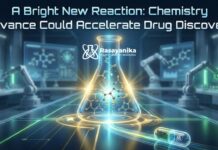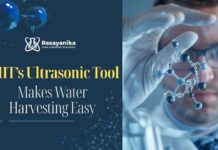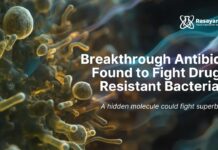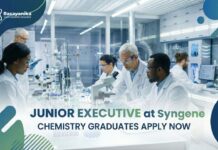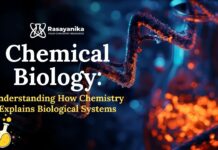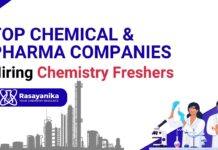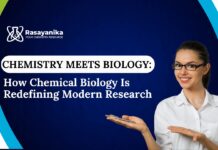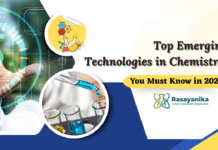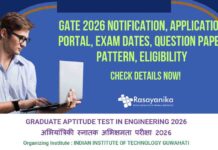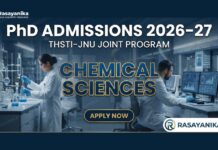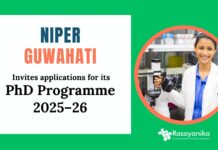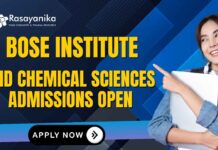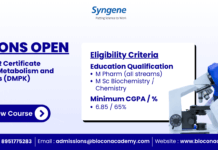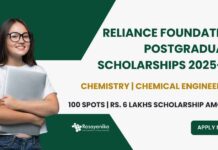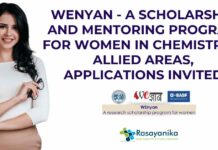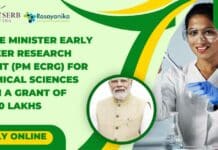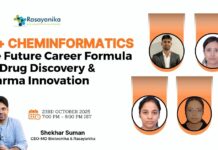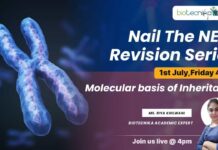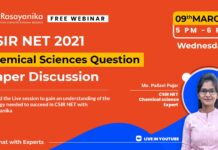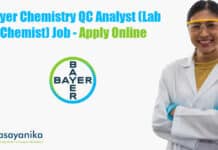QA and QC Techniques You Must Know for Analytical Chemistry Job Roles
Quality Control (QC) and Quality Assurance (QA) are the backbone of the pharmaceutical, food, and chemical industries. Their primary goal is to ensure that the products released into the market are safe for consumers. Along with safety, they are also concerned with the quality and performance standards of the products available in the market.
To achieve these goals, one must possess a thorough knowledge of Analytical Chemistry techniques. These techniques help to determine the quality of products by detecting adulterants. They also help identify and quantify chemical substances.
To have a successful career in QA or QC, particularly in sectors such as pharmaceuticals or biotechnology, understanding key analytical chemistry techniques is essential. The methods help analyze a wide range of products, including raw materials, intermediates, and finished goods.
This article will be a guide for those aspirants who want to understand the backbone of QA or QC. Here we have curated those essential analytical techniques that will help in the upskilling process.
1. High-Performance Liquid Chromatography (HPLC)
HPLC is one of the widely used QA and QC techniques in Analytical chemistry-based job roles. With the help of HPLC , one can effectively separate the components from a mixture. This method ensures the identification and quantification of the different components in a mixture. It is one of the most commonly used analytical techniques in QC/QA labs.
Importance of HPLC
- HPLC ensures drug purity and potency
- It helps in determining the impurities present in the products.
- Assesses the stability of pharmaceutical formulations
The HPLC has the following components: a pump, which is used for transporting the solvent through the system. It also comprises an Injector that helps in introducing the sample into the HPLC system. Along with this, there will be a column to separate the sample components and a detector to identify the compounds that are getting separated from the column.
HPLC is widely used in the pharmaceutical and food industries. It is also used in cosmetics and environmental testing processes.
2. Gas Chromatography (GC)
GC will be effective in separating and analyzing volatile organic compounds. It is beneficial for low-molecular-weight compounds that are present in both gaseous and liquid forms.
This technique is primarily used in residual solvent analysis and the detection of pesticide residues. Effectively used by the perfume industry to check the flavour and fragrance analysis. GC helps in testing the purity of gas.
Gas chromatography has the following components;
An injector that facilitates the vaporization of the sample. A column or a capillary that helps in separating the mixture. The GC also contains a carrier gas, such as helium or Nitrogen. Finally, it also features a detector, which can be a mass spectrometer (GC-MS) or a Flame Ionization Detector (FID).
3. Ultraviolet-Visible Spectroscopy (UV-Vis)
UV-vis spectroscopy is one of the essential QA & QC techniques for Analytical Chemistry job roles. This technique mainly focuses on quantifying the materials.
The technique uses a beam of light that passes through the sample. And the instrument measures the amount of light absorbed, which is directly related to the concentration of the compound. The technique provides a thorough understanding of drug substance identification.
Once the analysis is completed, the results can be calibrated using graphs. Using the Beer-Lambert law, one can determine the concentration of various materials present in the product.
4. Infrared Spectroscopy (FTIR)
Fourier-transform infrared (FTIR) spectroscopy is utilized to determine which functional groups are present in organic molecules. The method uses vibrational modes to detect the various functions. The technique helps identify raw materials and also verifies the authenticity of polymers and plastics. It is beneficial in detecting contaminants in products and is a widely adopted QA/QC technique in Analytical Chemistry.
Skills required to perform the FTIR technique include Spectra interpretation, Baseline correction, and Functional group recognition.
5. Atomic Absorption Spectroscopy (AAS)
AAS is a widely used QA QC technique that aims to determine the metal concentration present in samples. It is a precise and sensitive technique.
This is also used to test the heavy metal concentration present in water. The method also enables the analysis of the nutritional content present in food and beverages. AAS is used for catalyst monitoring in various chemical manufacturing and processing industries.
AAS includes the following components;
- Atomizer – this is a flame or graphite furnace
- Light source, which is usually a hollow cathode lamp
- Detector to measure absorbed light
6. Karl Fischer Titration
It is a chemical method used to determine trace amounts of water in samples, either by volumetric or coulometric methods.
This technique is crucial for many packaging applications. Any trace amounts of water present in the products will drastically decrease the shelf life. Hence, determining the water content in products helps in quality control.
This is also beneficial in testing many final products and is essential in maintaining the quality of hygroscopic materials.
7. pH and Conductivity Measurements
This is one of the basic QA & QC techniques for Analytical Chemistry-based job roles. They are crucial for ensuring the quality of raw materials and aqueous solutions. This particular technique is highly adapted for testing the stability of products and monitoring batch processes.
To perform this technique, one should have a thorough knowledge of electrode calibrations and sample preparations.
8. Thin Layer Chromatography (TLC)
TLC is a simple, low-cost technique used for qualitative analysis. It separates compounds based on polarity.
QC Applications:
- Identity check of raw materials
- Impurity detection
- Process monitoring
With the help of microcapillary tubes, the samples are spotted on a TLC plate that has been coated with an adsorbent material, such as silica. A solvent will be chosen to facilitate the movement of the sample. This is accomplished by the capillary action, which separates the components present in the sample.
9. Titrimetry (Volumetric Analysis)
This is one of the classic techniques used to determine the concentration of a substance in any given product. This can be achieved by reacting the substance with a reagent whose concentration is already known to us.
This technique is widely used in detecting the presence of active ingredients in a given product. Also enables the detection of the pH levels of the substances. Through which one will get a proper understanding of the substance’s acidity or alkalinity. Titrimetric analysis also helps in detecting the hardness of water.
Skills Needed:
- End-point detection
- Titration curve interpretation
- Reagent preparation and standardization
10. Inductively Coupled Plasma Mass Spectrometry (ICP-MS)
ICP-MS is widely used for detecting trace levels of metals and elements with ultra-high sensitivity. This is used in the cosmetic industry and even in the pharmaceutical sector. The technique can also be used in the clinical research sector to analyse elemental concentrations in the blood and tissue samples.
The components include a nebulizer, which aids in the introduction of the sample. Followed by plasma generation and ion separations, and finally, the detection of trace elements.
Key Skills and Certifications for QC/QA Professionals
Certifications are the key to securing jobs faster. Additionally, many hands-on training and courses related to QA/QC will be beneficial for securing jobs in top companies. Analytical thinking and data interpretation. With the help of certifications, one can gain skills in report writing, calibration, and validation techniques. Also beneficial in understanding SOP writing procedures.
One of the highly recommended certifications is the Postgraduate Diploma in QA & QC, provided by Rasayanika.
Mastering these techniques is highly recommended for candidates who are interested in joining the QA/QC industry. These are the techniques that are making consumers rely on the products. They ensure the safety and quality of all products on the market, meeting regulatory standards. The methods help maintain product integrity.
If you are a chemistry or pharmacy graduate, building a strong foundation in these analytical tools will make you stand out. This, in turn, increases the chances of securing job opportunities in various industries, such as pharmaceuticals, biotechnology, food, and environmental sectors.
Begin with a foundation of basic knowledge and progress to method development, instrument validation, and troubleshooting. Combine your technical expertise with certifications and hands-on lab training to stand out in this competitive field.


